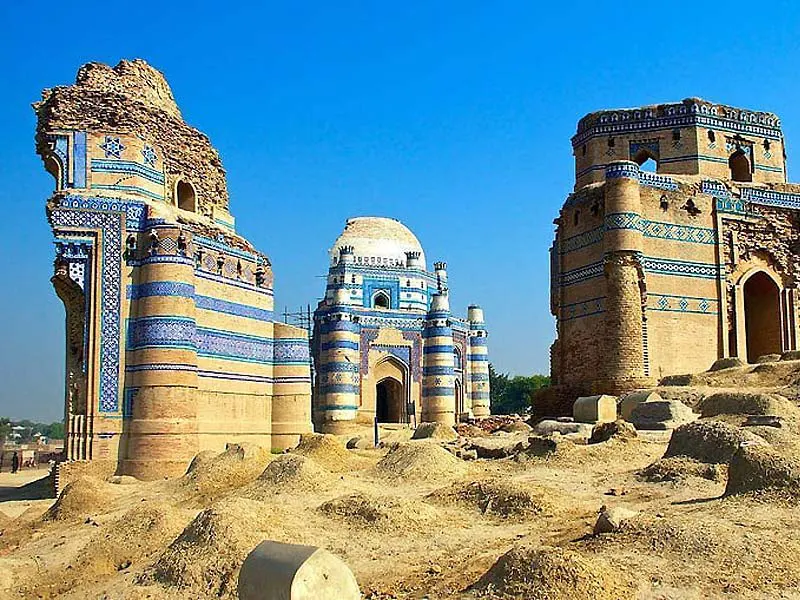Standing out as a land of fine quality cotton, aromatic and tasty mangoes, exquisite monuments and craftsmanship, the South Punjab region also enjoys rich cultural heritage that the people cherish and keep close to their hearts. Dubbed as the treasure trove of cultural and historic heritage in Pakistan, South Punjab had been the cradle of Indus Valley Civilization and a home to remains of ancient Buddhist site at Mound Dillu Roy in Dera Ghazi Khan.
Under the influence of Islamic empires, Islamic architecture and the way of life, the monuments depicting Islamic architecture were aplenty in this area. Remaining off the human eye for a long time, remains of Indus Valley Civilization in Cholistan desert of Bahawalpur at Ganweriwala were discovered by country’s eminent archaeologist Dr. Rafiq Mughal during a survey spanning over four years from 1974 to 1977. According to archaeologist and Director (Retd) Punjab Archaeology Department Saleem ul Haq, the site is being excavated these days by a team led by Dr. Rafiq Mughal and comprising Saleem ul Haq and other experts. Excavations at Ganweriwala resumed in March 2024 after a gap of four decades since its discovery as archaeologists attribute this delay to unavailability of water, lack of funding, road access and manpower at Ganweriwala to dig out remains of settlements – believed to be the third largest of Indus Valley Civilization between Harappa and Mohenjo-Daro, belonging to an era of 2600 BC.
Dr. Rafiq Mughal had discovered 414 sites including Ganweriwala during survey conducted in 1976 on 400-450 kilometer area from Fort Abbas to Sindh boundary along the bed of now dried-up ancient Hakra river, informed Saleem ul Haq. He said some remains of ancient civilizations exist around 200-300 kilometer from each other while another site at Kundwala was at least 100 kilometres away from Ganweriwala, having ruins from mature and late Harappan periods. Remains from two sites denote mature Harappan period and early Harappan period.
The archaeologist said that Mature Harappan period was an era when the civilization was at the zenith of its evolutionary development in 2600 BC, some 4600 years ago that later started declining – a process that culminated in 1950 BC and is described as late Harappan period. The surface finds from Ganweriwala in 1975 showed it was a mature Harappan site and we cannot rule out possibility of finding remains of early period in case of deeper excavation, Saleem Ul Haq said and hoped the report on excavation at Ganweriwala would be finalized by the end .










